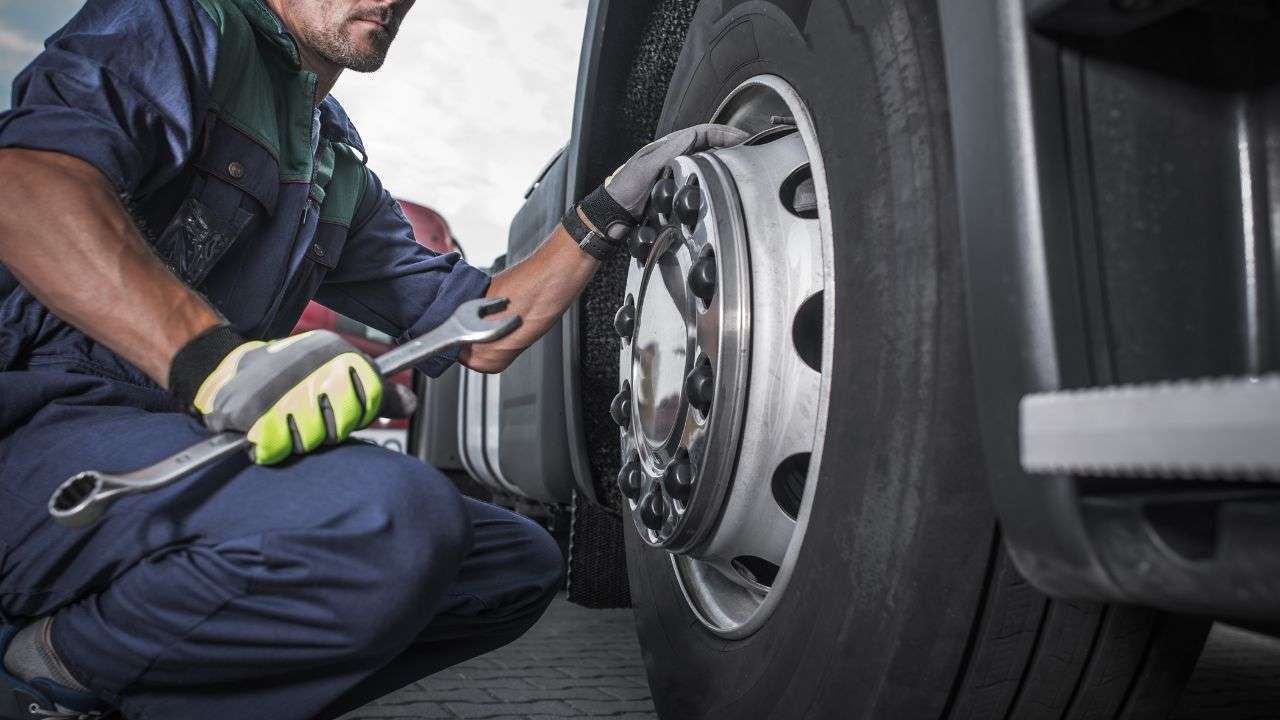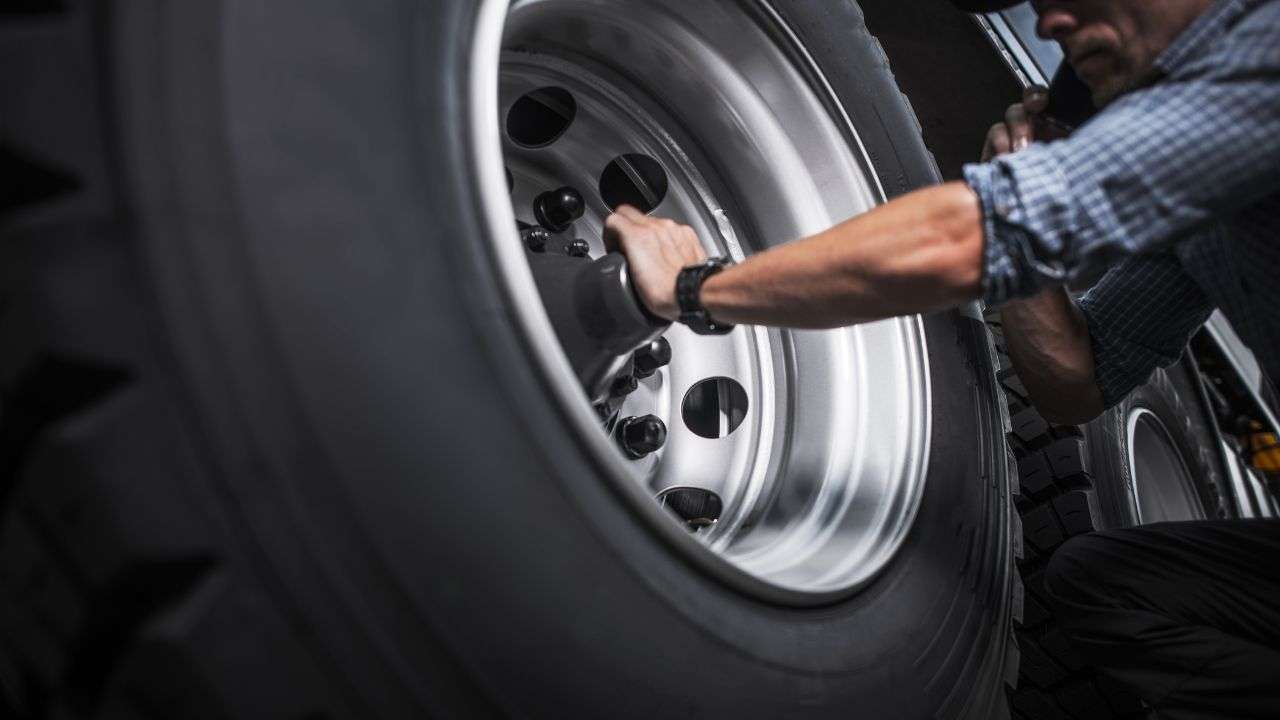
What The Tire Pressure For Semi Truck
Being a semi and large truck driver or company means that you should have at least some mechanical knowledge about heavy haulers and semi trucks. Truckers should regularly check the condition of their truck before starting any long journey like the tire pressure measurement, diesel tank and engine maintenance requirements etc. One of the most important awareness truckers and companies should always have is that the truck tire pressure measurement. The pressure of trucks tire should be kept at a consistent level. For example the pressure of front drive tire are usually kept at 110 PSI while the back drive and trailer tires range kept between 95 and 115 PSI. To measure tire pressure truck drivers should always have a tire pressure gauge with them so they can routinely check the PSI and adjust as needed.
If you’re unfamiliar with the measurement of tire pressure for heavy or semi trucks, then you’re at the right place. In this guide we’ll learn some basic steps about tire pressure evaluation and how to choose right tire for semi trucks. So let’s continue to learn without wasting further time.
How to Check & Maintain Semi-Truck Tire Pressure
- To check semi-truck tire pressure, use a reliable tire pressure gauge to measure the pressure at the valve stem on each tire.
- Check the pressure when the tires are cold (in the morning), for accurate results. Make sure to remove the valve cap first .
- Now, firmly press the gauge onto the valve, and read the displayed pressure.
- But if needed then maintain proper tire pressure by adjusting as needed or the manufacturer’s recommended PSI, checking regularly, and inspecting for any leaks or damage.
- To find out what your tire pressure should be, you can check in any of the following places:
Set a schedule for checking pressure:
For commercial vehicles. It’s a good idea to check your tire pressure daily. This should be done as the first thing in the morning when the tires are cold. The warmer the air inside your tires, the less accurate your reading. Semi truck tire pressure can take a while to check, but ultimately, it is worth it.
Check tire pressure when tires are cold:
For the most accurate measurement of tire air pressure, it is recommended to check the tires when they are cold. Tires heat up as they are driven, which can lead to an increase in pressure and result in an inaccurate reading. To get a true indication of the tire pressure, wait until the tires have had time to cool down before checking.
Tools You'll Need To Check The Tire Pressure:
- Tire pressure gauge- High quality manual gauge
- Air compressor- Industrial grade to inflate semi truck tires properly.
- Valve stem caps- Ensure they are secure to prevent slow leaks.
Invest in a reliable gauge:
Tire pressure gauges range from dirt cheap to insanely expensive. When purchasing one, look for something on the higher end. Since you need to check a lot of tires on a daily basis, you want something that is accurate and going to last longer. It doesn’t need to be solid gold or engraved with your name, but do not hesitate if you need to spend more than pocket change to get it.
Go to check:
Your goal is to avoid mobile truck tire repair near gainesville. That means now is the time to get to checking. Here is how you do it.
- Remove the valve cap
- Press the gauge into the valve.
- Wait for the pressure reading to register.
- Repeat steps two to three times and one to two more times to ensure an accurate reading.
- Inflate or deflate tires to reach the correct PSI or manufacturer’s recommendation.
How to Choose the Right Tire for Your Semi-Truck
Choosing the right tire for your purpose is essential in maximizing tire life and minimizing tire cost per mile. Buying new tires includes general guidelines on selecting the right tire tread types to fit your road needs. You will most likely choose several combinations of tire which needs for your particular usage.

Know Your Application:
Identifying your service application can help you pinpoint the best combination of requirements prior to choosing tires.
Linehaul:
Linehaul trucks normally make runs that exceed 500 miles and are used to transport fifth wheel truckloads or less than fifth wheel truckload carriers. These vehicles typically run between 80,000 and 200,000 miles a year and operate on highways.
Regional:
Regional carriers operate within a limited multistate area and have runs of about 250 miles. They typically run between 30,000 and 80,000 miles a year.
Vocational:
Vocational trucks is run in both on highways and in off road environments. These applications operate in highly aggressive conditions at limited speeds and typically run between 10,000 and 70,000 miles a year.
Understand Tire Types:
Semi trucks require different tire types. Understanding each axle’s role helps determine the best tires for each one.
Steer Tires:
Steer tires are mounted on the front axle of the truck and are responsible for handling. The tread pattern for steer tires is often more focused on stability and comfort.
Drive Tires:
Drive tires provide excellent traction, especially when the truck is hauling heavy loads. Drive tires are designed for durability and should be able to withstand high levels of torque.
Trailer Tires:
Trailer tires don’t provide power to the truck. They are designed for long distance and minimal rolling resistance to save on fuel. Trailer tires are not responsible for traction but for load-bearing capacity.
Consider Load Capacity & Ply Rating:
Tires come with a load capacity rating, which indicates the maximum weight a tire can support. It’s important to select tires that match or exceed the weight requirements for your truck’s typical load.
Ply ratings:
The ply rating refers to the tire’s internal construction and its ability to carry load. Higher ply ratings mean the tire can handle heavier loads and provide more durability.
Weather & Road Conditions:
The climate and road conditions frequently should also influence your tire choice. These tires are versatile and work well in most conditions, making them a good option for trucks operating in moderate climates.
Budget vs. Longevity:
Tire costs can vary widely, but it’s important to balance upfront cost with long-term value. While cheap tires might save your money initially, they could lead to higher maintenance costs and more frequent replacements.
How Much Does A Semi Truck Tire Weigh
The tire of a semi truck plays a critical role in the safety and performance of the vehicle. The tire of a semi truck weighs 110 to 150 pounds. The weight can vary depending on the type of tire, its size, and the manufacturer. Heavy-duty truck tires can weigh up to 250 pounds without the rim. There are two ways to determine the weight of a semi truck. Which are laden and unladen. Laden weight involves measuring the weight of the truck when it is fully loaded. The unladen weight, on the other side, entails measuring the weight of the truck and trailer.
FAQ’S
Is 40 PSI too high for tires?
If the recommended pressure levels are 35, then the tires should not use more than 40 PSI.
What is the maximum tyre pressure for a truck?
Cold tire pressure higher than 145 PSI is not recommended. If cold tire pressure is over 8 PSI the recommended pressure, tire pressure should be corrected immediately.
Which tire is faster?
Wider tires are generally faster than narrower tires because they have a shorter, wider contact patch with the road, which allows them to roll more easily.

John Furbush
Author & Owner of 2 J's Auto Transport
- Phone:+1 877-325-7288
- Email:jfurbush@2jsautotransport.com
2J's Auto Transport Car Shipping Service
Are you Looking for a fast, trusted, insured, affordable and reliable Car shipping company? Don’t worry! just Contact 2J’s Auto Transport for a free quote and let us take the stress out of your auto transport experience!




